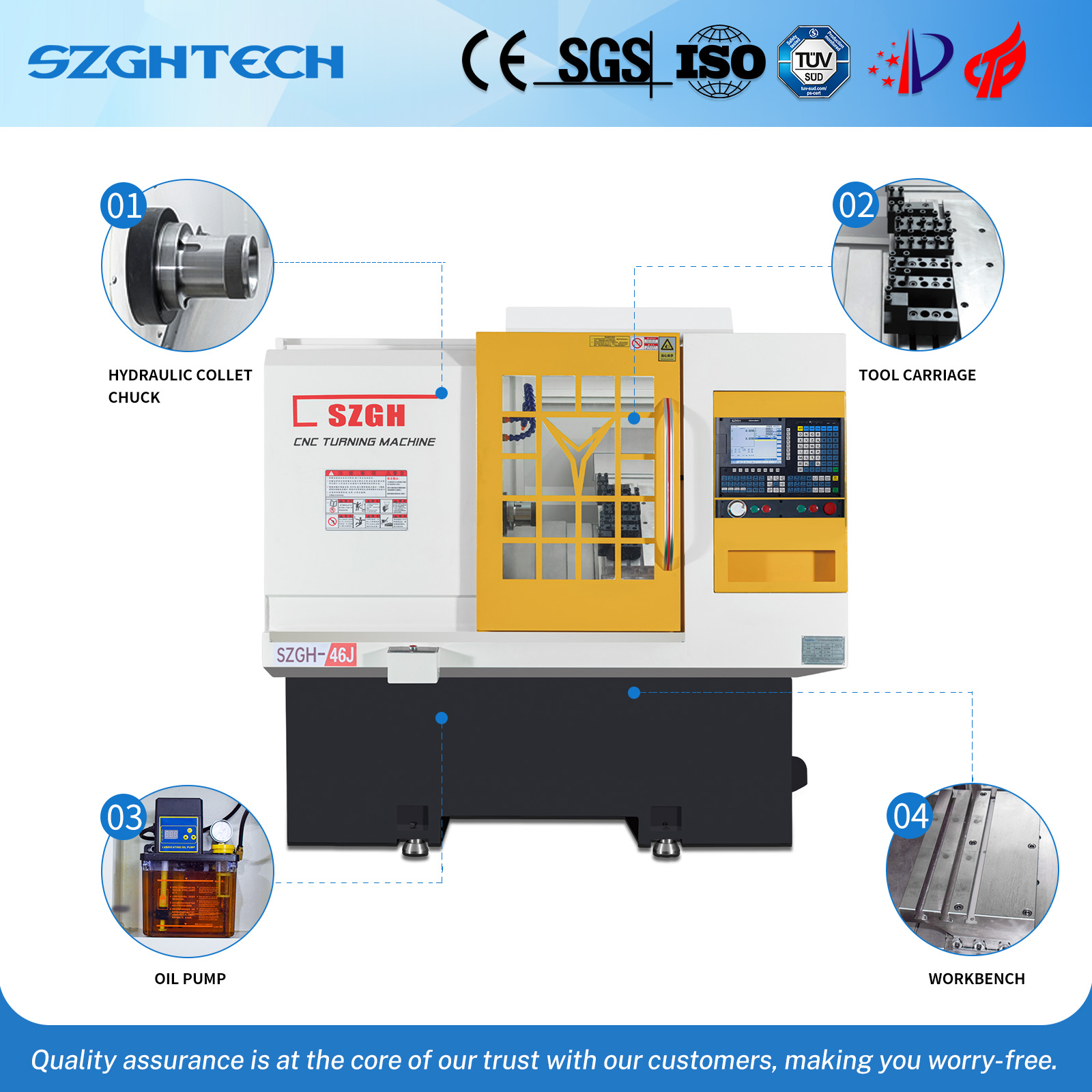SZGH-46J is a high-quality lathe designed for mass production. It adopts a high-rigidity, anti-deformation structure, which can meet the processing needs of various metal materials (such as copper, iron, aluminum and stainless steel), and is particularly suitable for the processing of high-precision, large parts. Its spindle power provides two options of 5.5kW and 7.5kW, which can flexibly meet different production needs.
Main features:
Powerful power: Using cnc lathe controller, the optional spindle power is 5.5kW and 7.5kW, ensuring stable and efficient processing capabilities.
Wide range of applications: Especially suitable for processing copper, iron, aluminum and stainless steel bars within 45mm, with automatic feeding function, greatly improving production efficiency.
Single-piece processing capacity: It can be equipped with hydraulic chuck to meet personalized production needs.
High-precision machining: Adopting multiple patented technologies and high-rigidity structure, it can accurately machine parts with a single-side cutting amount of less than 4mm, with a tolerance of ±0.0075mm and a surface finish of 1.6, ensuring product accuracy and surface quality.
High rigidity and anti-deformation design: Designed for high-precision, large parts machining to ensure stable operation under high load.
Comprehensively optimized accessories: After careful design and reasonable matching, the performance of each accessory has been fully utilized to ensure the best cost-effectiveness.







